-
 Bitcoin
Bitcoin $108,513.1844
1.11% -
 Ethereum
Ethereum $2,497.6304
2.68% -
 Tether USDt
Tether USDt $1.0003
0.00% -
 XRP
XRP $2.1970
0.45% -
 BNB
BNB $654.8687
0.93% -
 Solana
Solana $151.5686
0.98% -
 USDC
USDC $0.9999
0.00% -
 TRON
TRON $0.2768
0.45% -
 Dogecoin
Dogecoin $0.1669
2.29% -
 Cardano
Cardano $0.5669
0.01% -
 Hyperliquid
Hyperliquid $40.8241
7.53% -
 Bitcoin Cash
Bitcoin Cash $502.2050
1.99% -
 Sui
Sui $2.8329
1.69% -
 Chainlink
Chainlink $13.4933
1.17% -
 UNUS SED LEO
UNUS SED LEO $9.1647
0.40% -
 Avalanche
Avalanche $18.2894
2.39% -
 Stellar
Stellar $0.2378
-0.30% -
 Toncoin
Toncoin $2.8861
1.37% -
 Shiba Inu
Shiba Inu $0.0...01160
0.69% -
 Litecoin
Litecoin $87.3577
0.81% -
 Hedera
Hedera $0.1513
2.77% -
 Monero
Monero $314.7690
1.06% -
 Polkadot
Polkadot $3.4747
2.31% -
 Bitget Token
Bitget Token $4.6119
-0.81% -
 Dai
Dai $0.9999
0.00% -
 Ethena USDe
Ethena USDe $1.0003
0.02% -
 Uniswap
Uniswap $7.2742
3.83% -
 Pepe
Pepe $0.0...01005
5.47% -
 Aave
Aave $275.3638
6.61% -
 Pi
Pi $0.5242
-1.41%
How to avoid slippage in CORE trading? How to choose between market and limit orders?
When trading CORE, use limit orders to set specific prices and minimize slippage, especially during high liquidity periods to ensure better execution.
May 07, 2025 at 10:01 am
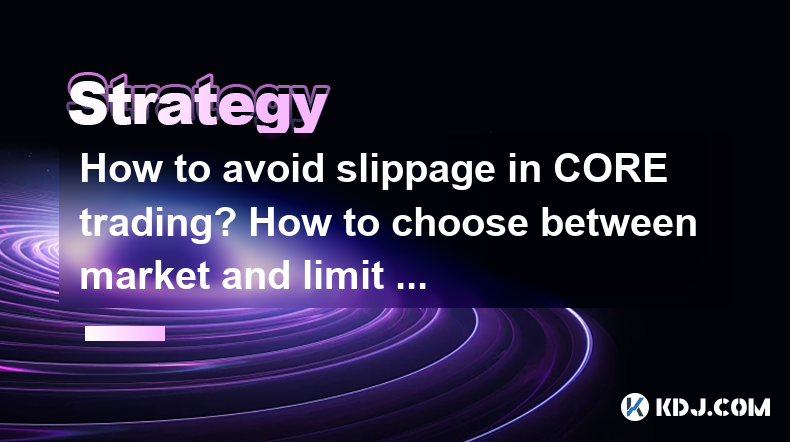
Trading cryptocurrencies like CORE involves navigating various market dynamics, one of which is slippage. Slippage occurs when there is a difference between the expected price of a trade and the price at which the trade is executed. This can happen due to market volatility or low liquidity. Understanding how to minimize slippage and choosing the right type of order can significantly enhance your trading experience.
Understanding Slippage in CORE Trading
Slippage is an inevitable part of trading in volatile markets like cryptocurrencies. When trading CORE, slippage can occur if the market moves rapidly between the time you place your order and the time it is executed. This is particularly common during periods of high volatility or when trading large volumes. To minimize slippage, it's crucial to understand the factors that contribute to it and the strategies you can employ to mitigate its impact.
Strategies to Minimize Slippage
There are several strategies you can use to reduce slippage when trading CORE. One effective method is to trade during times of higher liquidity. Liquidity refers to the ease with which an asset can be bought or sold without affecting its price. Trading when more participants are active in the market can help ensure that your orders are filled closer to your desired price.
- Use limit orders: Limit orders allow you to set a specific price at which you want to buy or sell CORE. This can help you avoid slippage by ensuring that your trade is only executed at your specified price or better.
- Avoid trading during high volatility: High volatility can lead to significant price movements, increasing the likelihood of slippage. If possible, try to trade during more stable market conditions.
- Break up large orders: If you are trading a large volume of CORE, consider breaking it into smaller orders. This can help minimize the impact on the market and reduce slippage.
- Monitor the order book: Keeping an eye on the order book can give you insights into the current liquidity and potential price movements, helping you make more informed trading decisions.
Market Orders vs. Limit Orders
When trading CORE, you have the option to use either market orders or limit orders. Market orders are executed immediately at the best available price, while limit orders are executed only at a specified price or better. Understanding the differences between these two types of orders can help you choose the best option for your trading strategy.
When to Use Market Orders
Market orders are best used when you prioritize speed over price. If you need to enter or exit a position quickly, a market order ensures that your trade is executed immediately. However, this comes with the risk of slippage, especially in volatile markets. For example, if you want to buy CORE quickly during a sudden price drop, a market order can help you capitalize on the opportunity.
When to Use Limit Orders
Limit orders are ideal when you want to control the price at which you buy or sell CORE. By setting a specific price, you can avoid slippage and ensure that your trade is executed only at your desired price or better. For instance, if you believe that CORE will reach a certain price level, you can set a limit order to buy at that price, potentially saving you money compared to a market order.
Choosing Between Market and Limit Orders
The choice between market and limit orders depends on your trading goals and the current market conditions. If you need to execute a trade quickly and are willing to accept the risk of slippage, a market order may be the best choice. On the other hand, if you want to control the price at which you trade and are willing to wait for the market to reach your specified price, a limit order is more suitable.
- Assess your risk tolerance: Consider how much slippage you are willing to accept. If you are risk-averse, limit orders may be more appropriate.
- Evaluate market conditions: High volatility may increase the risk of slippage with market orders. In such cases, limit orders can help you manage this risk.
- Consider your trading strategy: If you are a day trader looking to capitalize on short-term price movements, market orders may be more suitable. If you are a long-term investor, limit orders can help you buy or sell at more favorable prices.
Practical Steps to Place Market and Limit Orders
To effectively use market and limit orders when trading CORE, follow these practical steps:
For market orders:
- Open your trading platform and navigate to the CORE trading pair.
- Select the "Market" order type.
- Enter the amount of CORE you want to buy or sell.
- Review the order details and confirm the trade. The order will be executed immediately at the best available price.
For limit orders:
- Open your trading platform and navigate to the CORE trading pair.
- Select the "Limit" order type.
- Enter the amount of CORE you want to buy or sell.
- Set the specific price at which you want the order to be executed.
- Review the order details and confirm the trade. The order will be placed in the order book and executed when the market reaches your specified price.
Monitoring and Adjusting Orders
Once you have placed your orders, it's important to monitor them and make adjustments as needed. Market conditions can change rapidly, and staying vigilant can help you optimize your trading strategy.
- Monitor your orders: Keep an eye on the status of your market and limit orders. If a market order is not executed as expected, consider the impact of slippage and adjust your strategy accordingly.
- Adjust limit orders: If the market moves away from your specified price, you may need to adjust your limit order to increase the chances of execution. Conversely, if the market moves in your favor, you may want to adjust your order to lock in a better price.
- Cancel and replace orders: If market conditions change significantly, you may need to cancel your existing orders and place new ones to reflect the updated market dynamics.
Frequently Asked Questions
Q: Can slippage be completely eliminated when trading CORE?
A: While it's not possible to completely eliminate slippage, you can minimize its impact by using strategies such as trading during high liquidity periods, using limit orders, and breaking up large orders.
Q: How does the size of my order affect slippage when trading CORE?
A: Larger orders can have a greater impact on the market, increasing the likelihood of slippage. To mitigate this, consider breaking up large orders into smaller ones to reduce their impact on the market.
Q: What are the risks of using market orders when trading CORE?
A: The main risk of using market orders is slippage, especially in volatile markets. Market orders are executed immediately at the best available price, which may differ significantly from your expected price.
Q: How can I determine the best time to use a limit order when trading CORE?
A: The best time to use a limit order is when you want to control the price at which you buy or sell CORE. Consider using limit orders during periods of lower volatility and when you are willing to wait for the market to reach your specified price.
Disclaimer:info@kdj.com
The information provided is not trading advice. kdj.com does not assume any responsibility for any investments made based on the information provided in this article. Cryptocurrencies are highly volatile and it is highly recommended that you invest with caution after thorough research!
If you believe that the content used on this website infringes your copyright, please contact us immediately (info@kdj.com) and we will delete it promptly.
- Blockchain, Apple Stock, and UAE Investors: A New York Minute on Digital Finance
- 2025-06-30 10:30:11
- SEC, Grayscale, and Bitcoin ETFs: A New York Minute on Crypto's Next Big Thing
- 2025-06-30 10:30:11
- Bitcoin, Corporate Restructuring, and Institutional Investors: A New Era?
- 2025-06-30 10:50:12
- Cardano, Hoskinson, and Bitcoin DeFi: A New Narrative?
- 2025-06-30 11:10:14
- Ondo Finance and the Tokenized Revolution: Are Blockchain Stocks the Future?
- 2025-06-30 11:10:14
- SEI User Activity Sparks Short Squeeze Talk as Price Nears Key Resistance
- 2025-06-30 08:30:12
Related knowledge
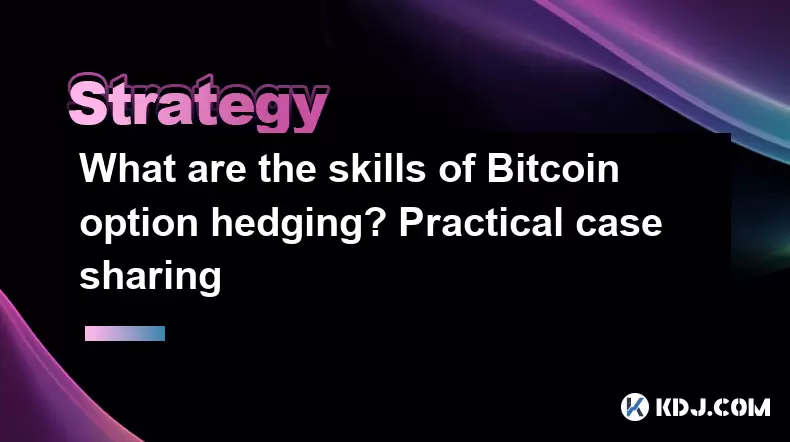
What are the skills of Bitcoin option hedging? Practical case sharing
Jun 24,2025 at 04:01pm
Understanding Bitcoin Option HedgingBitcoin option hedging is a risk management strategy used by traders and investors to protect their positions in the volatile cryptocurrency market. By using options, individuals can limit potential losses while retaining the opportunity for profit. In essence, it allows one to insulate against adverse price movements...
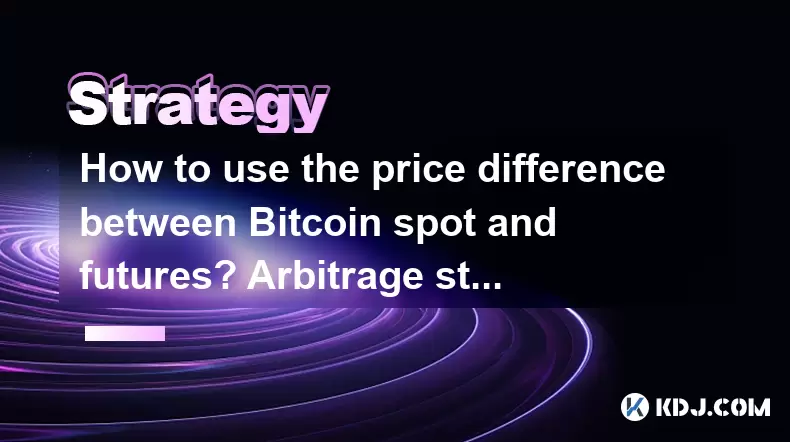
How to use the price difference between Bitcoin spot and futures? Arbitrage strategy
Jun 20,2025 at 02:56pm
Understanding Bitcoin Spot and Futures MarketsTo effectively leverage arbitrage opportunities between Bitcoin spot and futures markets, it's essential to understand the fundamental differences between these two types of markets. The spot market refers to the direct buying and selling of Bitcoin for immediate delivery at the current market price. In cont...
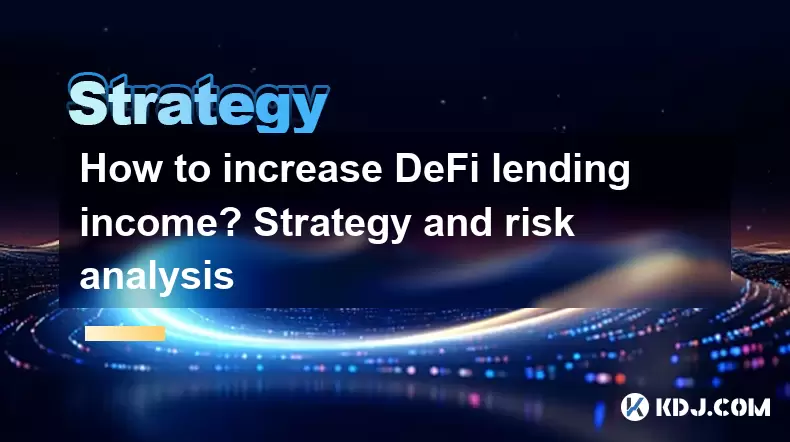
How to increase DeFi lending income? Strategy and risk analysis
Jun 24,2025 at 02:08pm
Understanding DeFi Lending and Its Income PotentialDeFi (Decentralized Finance) lending has emerged as a popular way to earn passive income in the cryptocurrency space. Unlike traditional banking systems, DeFi lending platforms allow users to lend their crypto assets directly to borrowers without intermediaries. The lenders earn interest based on the su...
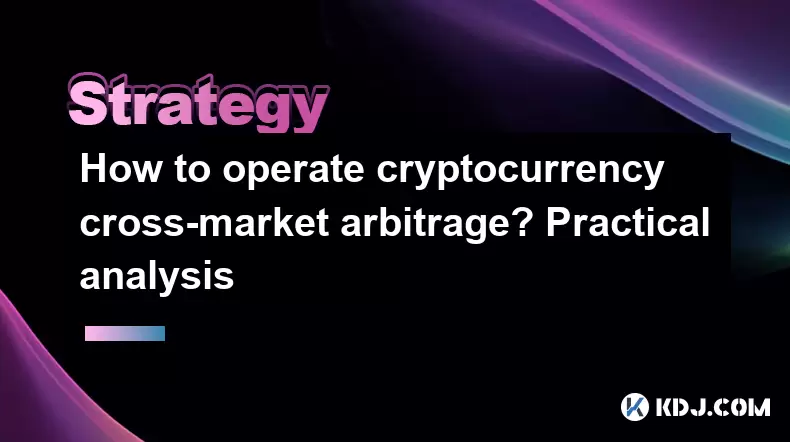
How to operate cryptocurrency cross-market arbitrage? Practical analysis
Jun 23,2025 at 04:01am
Understanding Cryptocurrency Cross-Market ArbitrageCryptocurrency cross-market arbitrage involves taking advantage of price differences for the same digital asset across different exchanges. The core idea is to buy low on one exchange and sell high on another, capturing the profit from the discrepancy. This strategy relies heavily on real-time market da...

How to make profits from high-frequency cryptocurrency trading? Sharing core skills
Jun 19,2025 at 05:07pm
Understanding High-Frequency Cryptocurrency TradingHigh-frequency trading (HFT) in the cryptocurrency market involves executing a large number of trades at extremely fast speeds, often within milliseconds. This method relies on small price discrepancies across exchanges or within a single exchange’s order book. Traders use complex algorithms and ultra-l...

What are the methods of cryptocurrency quantitative trading? Detailed analysis
Jun 22,2025 at 11:07pm
Understanding the Core of Cryptocurrency Quantitative TradingCryptocurrency quantitative trading refers to the use of mathematical models and algorithms to execute trades in the digital asset market. Unlike traditional discretionary trading, which relies heavily on human judgment, quantitative trading leverages data-driven strategies to identify profita...

What are the skills of Bitcoin option hedging? Practical case sharing
Jun 24,2025 at 04:01pm
Understanding Bitcoin Option HedgingBitcoin option hedging is a risk management strategy used by traders and investors to protect their positions in the volatile cryptocurrency market. By using options, individuals can limit potential losses while retaining the opportunity for profit. In essence, it allows one to insulate against adverse price movements...

How to use the price difference between Bitcoin spot and futures? Arbitrage strategy
Jun 20,2025 at 02:56pm
Understanding Bitcoin Spot and Futures MarketsTo effectively leverage arbitrage opportunities between Bitcoin spot and futures markets, it's essential to understand the fundamental differences between these two types of markets. The spot market refers to the direct buying and selling of Bitcoin for immediate delivery at the current market price. In cont...

How to increase DeFi lending income? Strategy and risk analysis
Jun 24,2025 at 02:08pm
Understanding DeFi Lending and Its Income PotentialDeFi (Decentralized Finance) lending has emerged as a popular way to earn passive income in the cryptocurrency space. Unlike traditional banking systems, DeFi lending platforms allow users to lend their crypto assets directly to borrowers without intermediaries. The lenders earn interest based on the su...

How to operate cryptocurrency cross-market arbitrage? Practical analysis
Jun 23,2025 at 04:01am
Understanding Cryptocurrency Cross-Market ArbitrageCryptocurrency cross-market arbitrage involves taking advantage of price differences for the same digital asset across different exchanges. The core idea is to buy low on one exchange and sell high on another, capturing the profit from the discrepancy. This strategy relies heavily on real-time market da...

How to make profits from high-frequency cryptocurrency trading? Sharing core skills
Jun 19,2025 at 05:07pm
Understanding High-Frequency Cryptocurrency TradingHigh-frequency trading (HFT) in the cryptocurrency market involves executing a large number of trades at extremely fast speeds, often within milliseconds. This method relies on small price discrepancies across exchanges or within a single exchange’s order book. Traders use complex algorithms and ultra-l...

What are the methods of cryptocurrency quantitative trading? Detailed analysis
Jun 22,2025 at 11:07pm
Understanding the Core of Cryptocurrency Quantitative TradingCryptocurrency quantitative trading refers to the use of mathematical models and algorithms to execute trades in the digital asset market. Unlike traditional discretionary trading, which relies heavily on human judgment, quantitative trading leverages data-driven strategies to identify profita...
See all articles

























































































